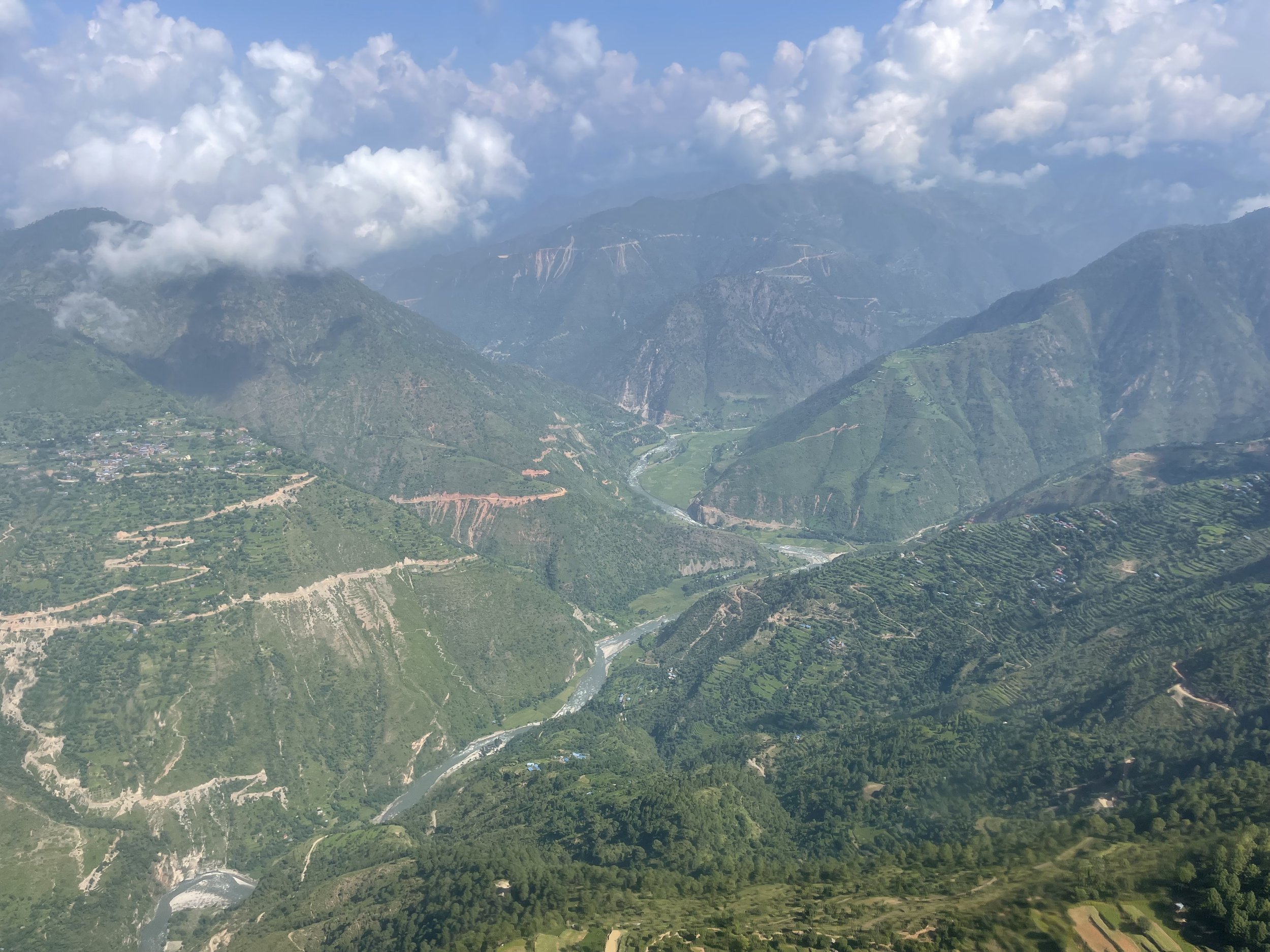Everest Base Camp via Gokyo Lakes (Part 7 of 7)
What’s the fastest way down a mountain?
Trekking Day 16: helicopter rides from Lobuche to Lukla and from Lukla to KTM
For all the days when we had been stuck in rainy Manthali, for the long days of hiking, for the adjustments to altitude — I ran on “dal bhat power, while N. ran on “diamox power” — and for really scraping the bottom of the barrels of our energy and will, we had decided in Gokyo that we would give ourselves the gift of flying out of the mountains. For us, there would be no mad dash to Lukla. (Because the trek from EBC down the mountain was easier, the itinerary down usually covered the equivalent of two days’ worth of hiking uphill in one.)
So from the same helipad where we had landed from Gokyo just three days ago, we waited on a crispy bright morning for our helicopter ride back to civilization.
The first part of the flight, when we skirted again the high snow-capped peaks, inspired awe and majesty.
***
As we descended to lower elevations, where snow was scarce an the tree line could be seen again, excitement was quickly replaced by the successive scenes of devastation of the recent rains — the same ones that had stranded us in Manthali at the beginning of the trek — on the mountain communities of the Himal area: it was hard to ignore the streaks of red muddy landfalls, rock slides, and flooded, orange terraced fields.
***
We who had cursed the crowded and dusty busy-ness of Kathmandu were happy to be back in the chaos. Back in our hotel, we took our first shower in a week.
***
And so it ended the way it began, at Kathmandu’s Tribhuvan International Airport.
As we were waiting in line to check our bags, we saw a large group of young men, dressed neatly alike and all in red baseball caps with Nepali and Korean flags crisscrossed. Could it be a youth soccer team? Another cricket team off to a friendly meet? Or a high school trip for enrichment and learning?
I could not resist my curiosity, so I approached a few in the group and asked.
“So you are all going to Korea?”
They nodded.
“What will you do there?”
“Agriculture…” Brave One answered.
“Oh, you will study?”
“No, ma’am. We’re going to work.”
“For how long?”
“Five years.”
This conversation was exchanged in Korean.
N. and I commented on how young they all looked. Brave One mentioned that he was 27; he would be 32 when he returned to his country and family. I prayed silently that they would all be treated well in their new workplaces.
From speaking with enough Nepalis we knew that these young men were already in the hole: they most likely would have borrowed the cost of the flight against their future labor; they also would be prohibited from returning to Nepal for at least a couple of years.
And that was Nepal in a nutshell: mountains and remittances.
After everyone was seated in the plane and it began to taxi, N. looked outside the window and saw the grounds crew standing in line and waving goodbye to the plane.
My guess was that the crew were waving to their compatriots leaving home.
Five years was a long time.
***
Supposedly there is a saying about Nepal: “Many have never visited Nepal, but those who come never come just once.”
That will be true of us.
***



























